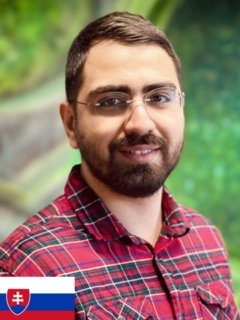Nariman Alipanah
Nariman Alipanah
Visiting PhD student (FunGlass Center, Trecin, Slovakia)
3D printing of hydrogels incorporating bioactive glass and antibacterial metal-organic frameworks for tissue regeneration applications
Supervisor: Dr. Zuzana Neščáková
Co-supervisor: Orhan Sisman
Supervisor in Erlangen: Prof. Aldo R. Boccaccini
Scaffolds obtained from the combination of hydrogels and inorganic bioactive glasses (BGs) can mimic the structure and properties of extracellular matrix (ECM). They also offer tunable mechanical properties and acceptable bioactivity in tissue regeneration application [1]. Although the potential of BGs has been proven to stimulate tissue regeneration, endowing effective antimicrobial properties into the scaffolds remains a challenge. The incorporation of antibacterial metal-organic frameworks into a hydrogel composite can prevent infections by releasing therapeutic cations. This work aims to fabricate a hydrogel scaffold incorporating BG and metal-organic antibacterial particles using 3D printing method. This project is part of the international collaboration of the FAU Institute of Biomaterials and the Centre for Functional and Surface Functionalized Glass (FunGlass) at University of Trencin, Slovakia, and has received funding from the European Union´s Horizon 2020 research and innovation programme under grant agreement No 739566.
[1] F. Bider, et al., Enhancing alginate dialdehyde-gelatin (ADA-GEL) based hydrogels for biofabrication by addition of phytotherapeutics and mesoporous bioactive glass nanoparticles (MBGNs), Journal of Biomaterials Applications (2024). (LINK: https://journals.sagepub.com/doi/full/10.1177/08853282241280768 )

